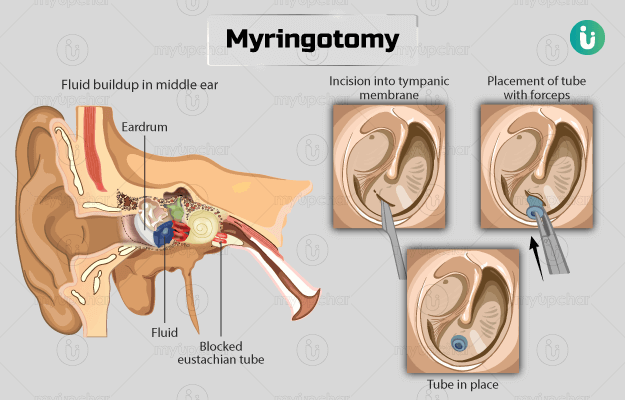

Definition: It is an incision made on the tympanic membrane to drain out suppurative or non-suppurative middle ear effusion. This procedure can be done along with insertion of ventilation tube (Grommet).
Intra- tympanic glomus tumor (Glomus Tympanicum) can cause profuse bleeding.
Anesthesia: Usually General anesthesia is preferred especially in children and person with acute inflammation. Local anesthesia can be given in cooperative adults.
Incision: This is made by sharp instrument called myringotome. The site of incision depends on the type of otitis media.
1. In Serous otitis media, a small radial incision can be made in the anteroinferior or posteroinferior quadrant. The radial incision separates rather than cuts through fibers of the middle fibrous layer. Hence, healing is with minimal scarring.
2.In Acute otitis media, a circumferential incision is made in the postero-inferior quadrant of the tympanic membrane. Thick fluid in the middle ear will ooze out through the incision.
